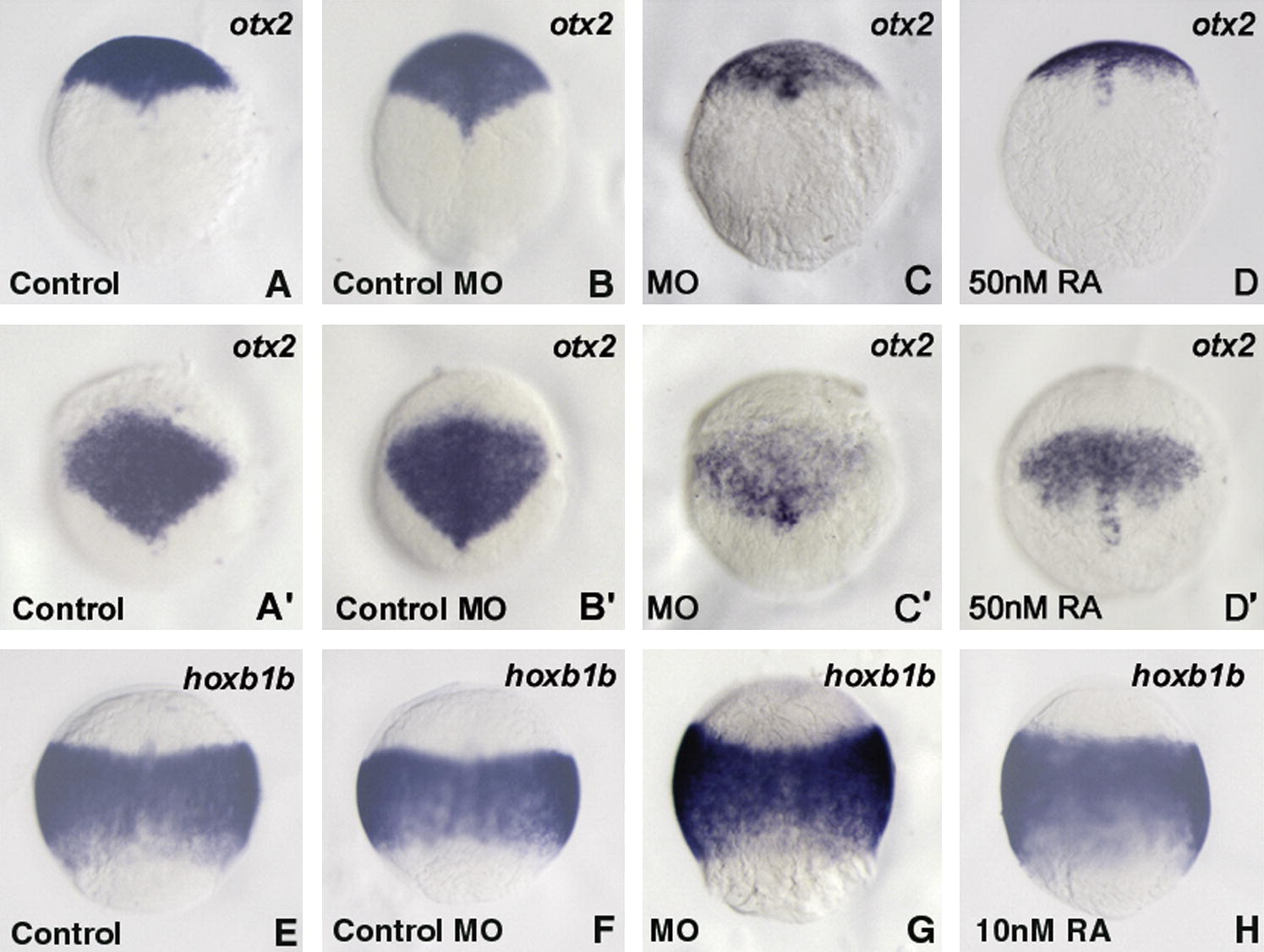Fig. 3 Knocking down n-cor posteriorizing anterior–posterior axis of zebrafish embryos in ways similar to increasing RA signaling. Embryos at 1- to 2-cell stages are microinjected with n-cor MO (C, C′ and G) to knock-down n-cor expression or treated with 50 nM RA (D and D′) or 10 nM RA (H) to increase RA signaling. All treated embryos (C, C′, D, D′, G and H) together with wild-type control embryos (A, A′ and E) and the control MO microinjected embryos (B, B′ and F) are grown to 80–90% epiboly and examined for the expression of otx2 (A–D and A′–D′) and hoxb1b (E–H) by whole mount in situ hybridization. The embryos of (A)–(H) are positioned anterior top and viewed dorsally. The embryos of A′–D′ are the same ones of A–D but positioned anterior front, respectively. otx2 is expressed anteriorly (A and A′) whereas hoxb1b is expressed posteriorly in the embryos (E). Microinjection of control MO does not change the expression patterns (B, B′ and F). Knocking down n-cor causes anterior reduction of otx2 expression (C and C′) and anterior expansion of hoxb1b expression (G), respectively. Embryos treated with 10 nM RA (H) or 50 nM RA (D and D′) display expanded expression of hoxb1b (H) and reduced expression of otx2 (D and D′), respectively.
Reprinted from Mechanisms of Development, 126(10), Xu, F., Li, K., Tian, M., Hu, P., Song, W., Chen, J., Gao, X., and Zhao, Q., N-CoR is required for patterning the anterior-posterior axis of zebrafish hindbrain by actively repressing retinoid signaling, 771-780, Copyright (2009) with permission from Elsevier. Full text @ Mech. Dev.

